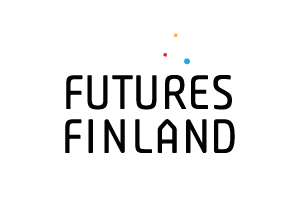Antti Uimonen on Embodied Futures method: "There is a lot of knowledge in the body"
One of the cornerstones of the Futures Finland is skills. The world does not stop changing, the methods and tools of futurists are also constantly evolving. We continuously scan the operating environment and are sensitive to understand what new skills and tools, both from the perspective of the changing operating environment and from the perspective of our members, are needed in the future. We organize trainings for our members both independently and in cooperation with our members. This time, we delved into embodied knowledge and methods and invited dancer, performance artist and futurist Antti Uimonen to host his Embodied Futures Workshop for the members of Futures Finland.
The chair of the board of Futures Finland Minna Koskelo also speaks about the importance of embodied knowledge in her futures- design approach and in learning. Physical experience and sensory engagement contribute to knowledge and creativity. She gave a short introduction to the theme in the event.
Here, Antti Uimonen speaks about his work and the embodied futures method he has developed.
1. Antti, you are a dancer, performance artist and futurist. How did you become interested in futures thinking and how do you use it in your work?
After my BA studies in Industrial Engineering, I found the Futures Studies MA program at the University of Turku. Since the first course, for the first time, I was super excited to study for exams.
In my artistic work, I use futures thinking to critically investigate the kind of futures I am proposing with my work. What does my work tell about the present, and what might it speculate or suggest about the future? I think every artist holds this social responsibility to try to be aware of the world views they are supporting and promoting.
My work is often based on personal topics or motivations, and I also use futures thinking to create material and layers, so that the work can become about more than just me and myself. I want my work to spark imagination and alternative points of view for my audiences. Futures methods are helpful here.
2. You have developed the Embodied Futures Method, which you introduced to the members of Futures Finland at our workshop. Why it is important to use the body and its movement in futures thinking?
Working with movement and the body allows things to be felt and experienced in a new way. it also has the tendency to ground people and bring them to the present moment. Using the body to sense and experience can help spark ideas and different views of the future.
I also feel that working with bodies in this context brings hope. Creating and working together physically brings a sensation of togetherness and empathy. These feelings resonate positively towards thinking about more positive and utopian futures, and also seeing the bright side of things while speculating about more dystopian ones.
3. Can you tell us a little about how you developed the method?
The workshop method is a combination of the joint discussions with my friend and colleague Tero Hytönen, my past work experience in business consultancy, developing methods and practices for organizations to think differently, and my most recent studies in Performance Art. In my master’s studies, I wanted to find ways to combine Futures Studies methodology with my performance making practice. The workshop method was developed in a residency at Het Huis in Utrech, where I brought my current research and findings together in a workshop form because I want to also share the practice for others.
4. Does any kind of bodily movement help unlock the imagination and creativity?
It is a large and complex question, but I would say yes. Any kind of movement that allows to shift the focus to the body can unlock imagination, creativity and new ideas. This is why solutions to difficult questions often come during a walk, or a toilet break. Pushing towards solving something is not always the best approach. Sometimes, it is important to forget and let the brain and body do the work in their own pace and time. This way, any sort of movement can help in letting the body do the thinking.
5. During the workshop, we used movement, writing exercises and improvisation to find alternative or surprising perspectives to specific themes or questions. What is the role of other people and the shared experience in the process of sourcing embodied knowledge - or can you also use similar exercises when working alone?
In the arts, writing or moving intuitively, without trying to produce anything specific, is a common way of working. Reading the written text or looking at a recording of the movement material can inform and bring new ideas and perspectives to topics. When you let go and allow material to emerge from not knowing, the end result will most likely bring forward something interesting to move on with – but working without knowing requires trust and confidence. From my point of view, this is the most important step especially when wanting to create something new.
Similar exercises can be used when working alone. However, with a group, you’re more likely to get new ideas and inspirations.
6. Do you host these workshops regularly, or where can we find more information about the Embodied Futures Method?
I host these workshops whenever I have the chance, and have hosted them in various occasions from business organizations and academic conferences to art production houses and educational context. The workshop fits well in different contexts as the context, ideas and material come from the participants. If you want to hear more about the workshop, I’d be happy to talk more – you can find me on LinkedIn or Instagram.
Since this is such an interesting topic we will have a few more blogs coming up. Stay tuned.
